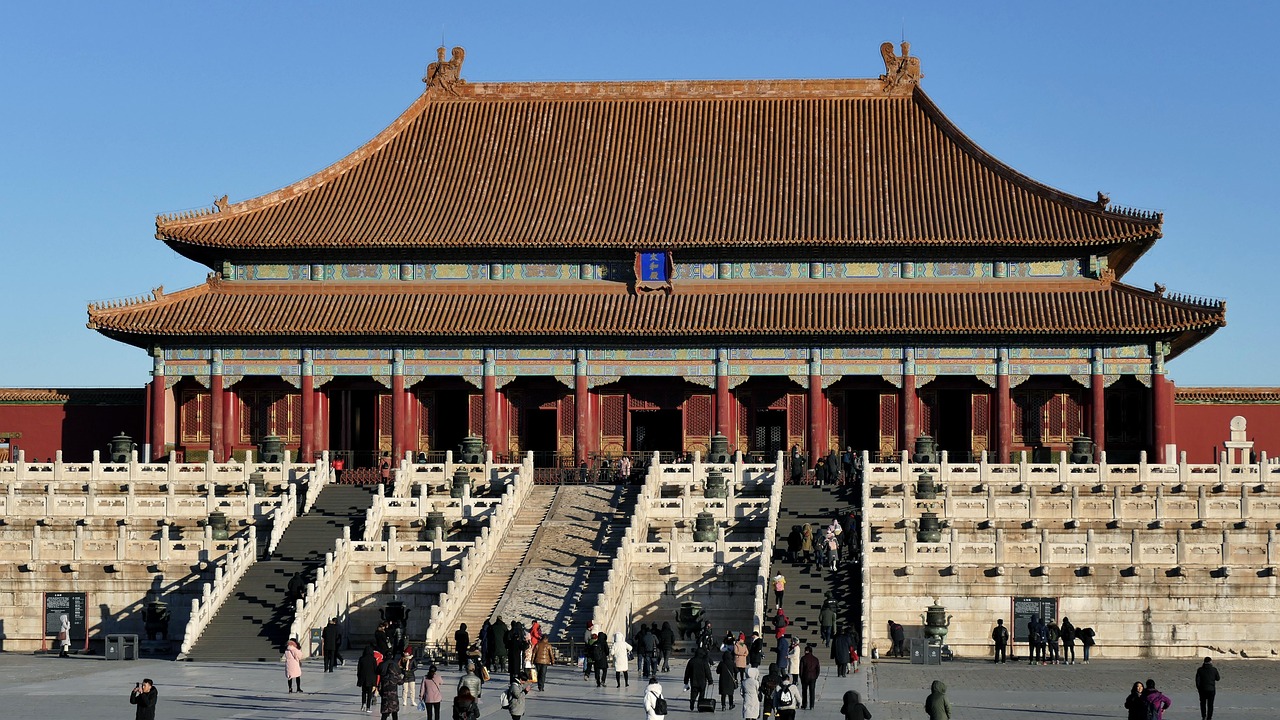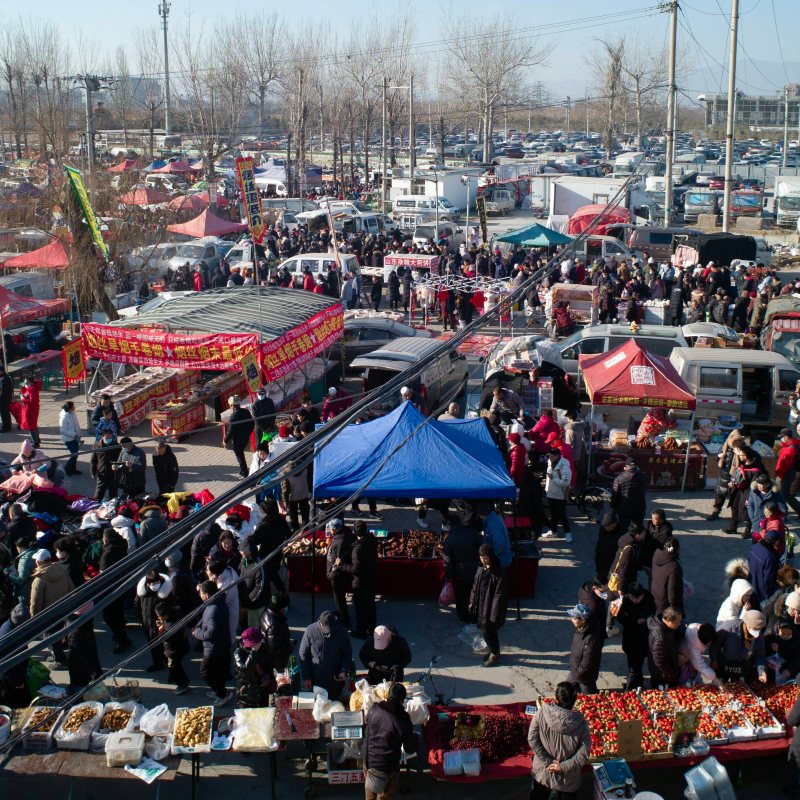The Forbidden City has been and still is an excellent symbol of the Chinese Empire's past with splendid palaces, manicured courtyards, and an immeasurable wealth of art." It has been listed as a UNESCO World Heritage Site and functions as the Palace Museum, allowing tourists to delve into the grandeur of the Ming and Qing dynasties. Here, we’ll provide you with all the information, such as pathways revered by former Emperors, architectural spectacles, and the marvels of the Forbidden City, along with its captivating history, must-visit spots, and guidance tips to ensure a phenomenal visit. So, let us delve into the treasure by touring the astonishing landmarks and then moving on to the lesser-known, but equally astonishing spots.
What is the Forbidden City, and why is it Important?
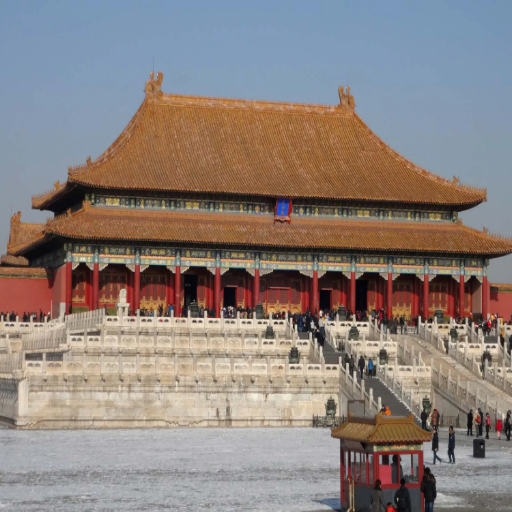
Grasping the Monumental Backstory of the Forbidden City
The Forbidden City rests in the middle of Beijing, China, serving as the imperial palace for the Ming and Qing dynasty emperors from 1420 to 1912. During this period, the City was home to twenty-four emperors. Today, the city is one of the world's most significant and best preserved antique wooden structures, spanning 180 acres. The City was ordered to be built by the Emperor of the Ming dynasty, Yongle, who took over 14 years to complete it with the effort of nearly 1 million workers, consisting of artisans and manual workers.
Meticulously organized along axes believed to be influenced by Confucian ideology and feng shui, the Bounden City's construction contains almost one thousand buildings, showcasing yellow, symbolizing imperial dignity. Its prominent features include the Imperial gardens and the Hall of Supreme Harmony. Being rich with history, the burden of the City remains essential as an illustration of supreme political authority and serves vital political purposes. It functioned as a ceremonial, political, and cultural place where emperors executed state-level activities such as governance, and served as the court on crucial state matters.
The ancient complex not only represents the majesty of China’s imperial history but also serves as a living museum that contains over 1.8 million treasures, including cursive and fine brushwork, paintings, rare ceramics, and jade artifacts from different epochs. At present, the Forbidden City still fascinates countless people, who are trying to find a balance between preservation and public access. Having been declared a UNESCO World Heritage Site, it is a symbol of China’s glorious past and offers insight into the luxurious lifestyle of its emperors. Its beauty will be preserved for future generations.
Significance of the Forbidden City in Imperial China
The Forbidden City was the political and ceremonial center of Imperial China for almost five centuries; it is a reminder of the centralization of power and the divinely sanctioned rule of the emperor. It accommodated 24 emperors of the Ming and Qing dynasties, serving as both a royal residence and the governing headquarters of the empire. Its architectural arrangement reflected the principle of hierarchy and cosmic order, where the central axis, according to feng shui, put the center of one’s geomantic circle in relation, subordinately to the Emperor as the “Son of Heaven.”
The detailed design of the Forbidden City, which is over 180 acres and contains roughly 980 existing structures, illustrates the empire’s desire for grandeur and symmetry. For instance, the Hall of Supreme Harmony stands as the largest wooden structure of its kind, serving as a center for important state ceremonies, representing the might and oneness of imperial rule. In addition, the stationary region was a stronghold of Confucian belief systems, marked by consideration for the violent order of social stratification, spatially adoring the emperor as the societal apex.
As an illustration, the enduring importance of the Forbidden City is not only historical. The internationally acclaimed landmarks such as the Great Wall, the Forbidden City, and the Summer Palace represent the growth of Chinese imperial might and serve as evidence of its civilization's increased control of advanced technology and artistry during its time of empire. The delicate woodwork, intricate sculpting, and lively coats of crimson alongside gold were proofs of the empire's affluence and skill, allowing the Forbidden City to become a mark of cultural and circumstantial dominance of the civilization in international politics.
The Architectural Wonders within the Palace Complex
The Forbidden City is an excellent example of China’s advanced architecture during the imperial era, as it served multiple purposes while simultaneously being functional, symbolic, and grand. It covers over 180 acres with 980 surviving buildings and over 8700 meticulously organized rooms. Every building was placed according to Feng Shui principles, meaning harmony with the natural elements. A hallmark feature is the central axis, which stretches from the southern meridian gate to the northern gate of divine prowess, which serves both as a boundary of ceremonial spaces and a symbol of imperial power.
Another noteworthy structure is the Hall of Supreme Harmony, which contains the largest wooden structure in China and was the site of great state rituals. The platform was surrounded by marble balustrades with intricate carvings of dragons, which added to the importance of the balcony in the complex. The inner court where the emperor and his family used to reside had stunning garden pavilions and private quarters filled with masterful creations. Every detail from the golden tiled roofs to the mural paintings exuded themes of good fortune and divine power. The palace museum is progressively making modifications to ensure the palace will inspire countless people with its astonishing beauty for years to come.
How to Visit the Forbidden City in Beijing?

Best Time to Visit the Forbidden City
The Forbidden City in Beijing can be best visited during the spring and autumn, which remains true for September. March to May, and September to November have mild weather conditions, particularly spring and autumn, alongside warm temperatures with clear skies, which invite exploration of the palace grounds. Spring mesmerizes with blooming flowers, while autumn enchants with a picturesque view of golden foliage.
Plan your visit on a weekday early to avoid large crowds. The Forbidden City is among China’s most popular tourist destinations, so morning entry is ideal for less crowded visits. During midday, many tourists arrive to visit, which can be overwhelming. Please be sure to check the official ticketing site for the current entry caps and available time slots on tickets. Since the site has a limited daily visit count aimed at preserving its rich heritage, they have set daily caps that need to be met.
How to Book Your Tickets for the Forbidden City Online
For a visit that is smooth and free of hitches, purchasing Forbidden City tickets online is the way to go. The Forbidden City's official website has information about ticket types, prices, and time slots, the most significant selling points for booking tickets. Visitors may also use authorized third-party ticketing services, many of which have foreign language options for international customers. To preserve and manage the historical site, purchasing tickets a few days in advance is best, as there are daily entry caps. Reservations require identifying details like a passport number matching the ID presented at entry.
While tickets allow you access to the main parts of the Forbidden City, some particular halls and special exhibitions may require an additional fee. Make your booking after cross-checking the list of attractions so you do not miss out on anything. Master and other major credit cards are widely accepted, and e-tickets will be sent after purchase, so presenting them at the gate for entry is also an option. Planning can net you your preferred time of visit so that you do not end up disappointed, ensuring everything flows while enriching your experience in this captivating historical wonder.
Self-Guided Tour Planning versus Guided Tour Planning
When considering historical sites or tourist attractions, one of the main determinants of one’s experience is the decision between a self-guided tour and a guided one. Both choices have distinct benefits, each appealing to different personalities and traveling styles.
While self-guided tours lack the structure of having a schedule or guide, they make up for it in freedom. You may meander through the site at a pace that suits you, dwell in areas of interest, or even breeze through parts that do not appeal to you. Many sites have well-structured materials a visitor may wish to download like maps, audio guides, or apps that explain the site’s narrative. This option works best with travelers who enjoy solitude or prefer more tailored experiences. While this works best for solitary travelers, developing an itinerary to capture all major highlights takes a considerable amount of time.
Conversely, guided tours offer curated itineraries bundled with expert insight. Only a professional guide can bring to life the history, architecture, and cultural significance of a site with insights, anecdotes, and stories not found in written form. During guided tours, travelers may receive priority or special access, significantly enhancing the visit. This option is ideal for travelers who appreciate time-framed itineraries or wish to deepen their understanding through interactive storytelling.
In the end, the decision between self-guided and guided tours will always depend on your focus, available time, and interest level regarding the specifics of the destination. Some travelers also prefer a mix, starting with a guided tour for the basics and later delving into independent exploration to revisit specific places. Considering these options will enrich your experience and enable you to enjoy a trip that is fully customized to your travel needs.
Where can you purchase tickets for the Forbidden City?
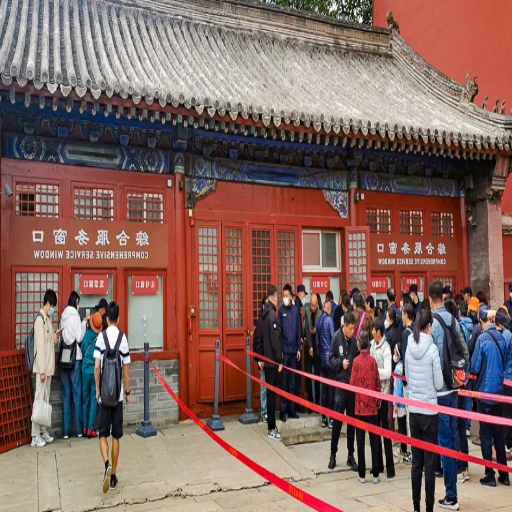
How To Book Tickets To the Forbidden City Online
As a precise example, booking a ticket for the Forbidden City has become efficient owing to the multiple avenues that allow visitors to book easily. Similarly, tickets may be purchased at the Palace Museum’s online website or at designated third parties who can sell tickets. It is prudent to initially check official websites as they provide the most timely and correct information, facilitating bookings by complying with overall restrictions.
You will be expected to provide your name, a form of ID like a passport if you are a foreign guest, and the date for your intended visit. Most importantly, make sure that you are aware that ticket release timings enforce a daily limit. Thus, make quick attempts to grab tickets, especially for prime tourist periods, if you wish to visit during peak seasons. The payment for these services is processed through credit cards or digital platforms that accept electronic payments.
When you arrive, you will receive a booking confirmation or a QR code at the entrance. Remember that some areas of the Forbidden City may require a separate ticket or prior reservation for exclusive exhibitions or restricted zones. Careful planning enhances your booking and ensures a hassle-free experience. Visit this distinguished historic site.
Tips For Skip-the-Line Tickets
Book in Advance: Skip-the-line tickets for the Forbidden City are in high demand. To ensure that your visit is as effortless as possible, it is essential to secure a reservation by buying in advance. Several websites sell tickets online. Booking earlier often comes with seasonal discounts or other promotions.
Understand Time Slot Policies: Many skip-the-line tickets come with time restrictions. Check the time printed on your ticket to avoid any last-minute clashes or delays. Arriving early alleviates a lot of stress and ensures a smooth check-in experience.
Look for Other Benefits: Some tickets that allow you to skip the queue may include additional benefits like guided visits, audioguides, or entry into certain areas of the site that are normally off-limits. Researching these matters can greatly help maximize the value of every ticket purchased.
Take Your ID With You: Some attractions check that the name on the ticket matches an ID, especially with pre-purchased and skip-the-line tickets. It's always ideal to carry some ID to avoid any headaches.
Make Use of Mobile Tickets: Many attractions now accept mobile tickets, which saves the trouble of printing the old-fashioned way. Check if the venue allows mobile QR codes for entry, and have your phone charged to ensure you can access your ticket easily.
Consider Being Aware Of Busy Days: Even with skip-the-line tickets, some attractions can get congested during peak times, which include weekends and public holidays. Early mornings, weekdays, and times when children are most likely to be at school are recommended.
Be Aware Of Venue Procedures: Before the event, go over the crucial dos and don’ts of the venue, such as what you can’t bring in, restricted zones, and everything in between. Being ready accelerates the protective measure screenings and ensures compliance with the rules.
All Ticket Types and Prices Explained
When looking for ticket types and prices, make sure you are indeed getting your worth physiologically, emotionally, and in this case, financially. Many establishments have a standard admission that usually grants entry to the venue and its main features. Premium and VIP tickets also cater to people wanting more exclusive and immersive experiences. These typically come with skip-the-line, guided tours and entry to restricted areas, often included with such tickets.
Establishments also offer family bought tickets with group and seasonal discounts. These are ideal for families, large groups, and visitors visiting the venue frequently. These are also perfect for travelers as they offer convenience and cost value. Travelers can go to different attractions at one price with combination tickets. They are bundled with several attractions. Sometimes, exclusive online discounts and early booking offers are available. All of these add to extra savings. Awareness of the age-based ticket price distinction and all the discounts available greatly assists in budgeting. Discounts for students and seniors are familiar and accessible through various venues.
What to Include in Your Forbidden City Itinerary?
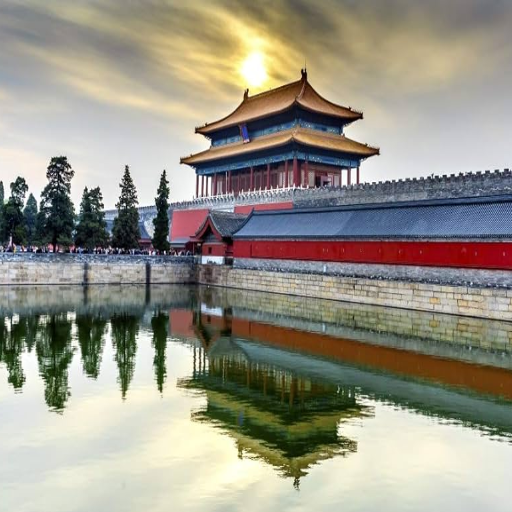
Recommended Spots: The Vogue Gallery and The Imperial Garden
The Vogue Gallery is part of the Forbidden City and showcases China’s imperial history. The palace has numerous ancient artifacts, including jade carvings, jeweled ornaments, and ceremonial regalia. The fine artistry of such pieces reflects the different cultures that span thousands of years. Understanding the importance of these items requires a lot of attention, especially regarding why the rulers of the Ming and Qing dynasties valued them so much.
Besides this, the Imperial Garden is a retreat from the vast stretches of the other parts of the palace. The garden also measures close to twelve thousand square meters, and its sections include ancient cypress trees, groves of pavilions, winding paths, and rockeries. All the elements are from classical Chinese, which unify nature with construction. Moreover, the garden's tranquility, compared to the rest of the Forbidden City, makes it an ideal area for contemplation.
Overview of the Exhibits in The Palace Museum
The Palace Museum is situated at the center of Beijing. It hosts one of the world's richest collections of Chinese art and historical relics. The displays within the museum encompass more than 8,000 years of Chinese civilization and over 1.8 million pieces. Visitors can view exquisite works of art and artifacts, including paintings, calligraphy, ceramics, jade pieces, and other imperial treasures depicting artistry, culture, and history. One of the highlights includes the Ming and Qing dynasty chinaware, which is popular for its unique colors and intricate patterns. These artifacts represented the history and beauty of the periods they belonged to.
Another notable exhibit displays the empire’s clothing and textiles, showcasing the imperial Chinese court’s splendor and sophistication. The exquisite embroidered silk robes tell of an emperor’s and empress’s life and are richly adorned with motifs denoting power and prosperity. Furthermore, the museum has some ancient bronzes and weapons from the Shang and Zhou dynasties, which are remarkable. These ancient Chinese artifacts demonstrate not only artistic achievements but also the artistry in metallurgy and military technology. These exhibits allow visiting travelers to immerse themselves in a different world and experience the wonders and ingenuity of Chinese civilization.
Jingshan Park: A Perfect End to Your Tour of the Forbidden City
Jingshan Park, directly north of the palace complex, serves as a gentle conclusion to the visit to the City. This historical imperial garden also contains lush vegetation and pathways that blossom beautifully throughout the seasons. The Park’s most prominent feature, Jingshan Hill, was made from the soil excavated to make the moat of the Forbidden City, representing harmony and balance in its design.
From the top of Jingshan Hill, one can find mesmerizing views of the entire city, not to mention the bird's-eye view of the sprawling Forbidden City. It especially stands out at sunrise or sunset when the golden light bathes the city in soft, golden hues, which look magical over the historical rooftops. Jingshan Park also showcases ancient Chinese landscaping artistry with classic-style pavilions. Whether for quiet contemplation, photography, or simply taking a break, this serene park is a stunning and unforgettable end to any tour of Beijing’s renowned imperial sites.
Should You Hire a Tour Guide for Your Forbidden City Tour?
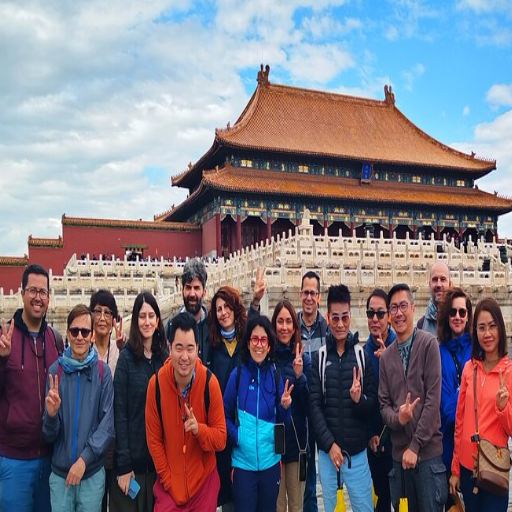
Advantages of A Private Tour with an Experienced Guide
In my case, the investment of a private guide for a Forbidden City tour pays returns of value, over and over again. An expert guide accentuates your visit by shedding light on the multifaceted sub-stories behind the history, intricate architecture, and culture of this UNESCO World Heritage Site. A guide makes sure that you are captured and do not miss the most important sights, as well as the stories that bring life to the ancient walls, so that the visitor is not lost in the history of the vast and rich location. Moreover, they can respond to all your queries on the spot, thus personalizing the visit and making it more interesting.
In addition, a private guide modernizes the visit regarding administrative work, time, and energy. Because of their experience, they have the best routes, times during the day when crowds are not there, and the most critical places to see- in short, they make the trip worthwhile. Also, an audio guide or a book would not provide some information that the local would have to offer, so their tour is bound to be better. There is much more to this than just walking around by yourself.
About practicality, a guide can manage the logistics from procuring tickets to supplying a historical background thoroughly and engagingly. The opportunity to participate in an organized, detailed tour helped me appreciate the splendor of this famous landmark and provided me with the necessary background information. Ultimately, a private tour guide changes your visit into an unforgettable all-inclusive journey that is more than shallow sightseeing.
Benefits of Smaller Group Tours
The first thing I noticed after joining a small group tour was the enhanced personalization compared to larger tour groups. With a smaller headcount, the guide had a better opportunity to address specific questions or areas of interest and adjusted his narration based on what we wanted to know the most. This made the tour more enjoyable, hands-on, and lively since there was plenty of talk beyond dialogue. Instead of sounding like a formal lecture, such learning became experiential.
In addition to these points, I would emphasize that moving around confined or crowded spaces is much easier. As a result, smaller groups can streamline movement through attractions compared to larger groups, where delays, bottlenecks, or sudden stops are too common. This efficiency made it possible to cover more in less time, maximizing our value from the visit. With a smaller group, the participants are more likely to form bonds and friendships, fostering a warm atmosphere.
With the distinct tours offered, I believe joining a small group significantly improved my ability to engage more profoundly and intimately with the location. The guide's consideration and the ease of a lesser number of participants made the whole experience incredibly valuable in that it was unlike anything I had encountered before. It stood in stark contrast to the hectic rhythm that is common with big tours. I would unreservedly make that choice again for any future travel.
Audio Guides for Self-Guided Tours
The world feels less daunting with audio guides specifically designed for self-guided tours. While offering essential information and context about the location, they provide unmatched autonomy. I appreciate the availability of audio guides since they permit me to control the itinerary. I can pause and skip sections to tailor the experience to my interests. This level of control enables me to spend ample time exploring fascinating sites while I breeze through less interesting areas. It truly simplifies things, like I have a personal tour guide in my pocket.
In my opinion, audio guides are helpful as they describe in detail the historical relevance of what the user is viewing. As with any good audio guide, the information is accurate, interesting, and compiled by an expert. What truly captivates the user is how the audio brings the location to life, transforming the audio guide into an enjoyable learning experience. This is the opposite of group tours since there are no distractions or interruptions while the user is completely immersed in the shared knowledge.
Another benefit is the flexibility in time management. I can have my tours done anytime during the day, such as as early as eight in the morning or as late as four in the afternoon. This option is suitable, especially in remote locations, because I do not have to worry about schedules. Overall, audio guides ensure that I enjoy the best of both worlds: being free to wander and having a knowledgeable companion.
Frequently Asked Questions (FAQs)
Q: What is the best way to experience the Forbidden City - group tour or self-guided tour?
A: As far as preferences go, both options are favorable. With self-guided tours, you will surely enjoy delving deeply into history, as you go at your own pace. On the other hand, group tours offer private guide insight, which can be invaluable when navigating the stories of this UNESCO World Heritage site.
Q: How do I book tickets in advance for the Forbidden City?
A: Booking tickets through Klook or even via the ticket office itself is no problem at all. However, get your tickets in advance, especially during peak times, to avoid long waiting times.
Q: Is it beneficial to hire a tour guide when visiting places like the Forbidden City?
A: A detailed explanation of the building's history and craftsmanship can enhance the visit, and hiring a guide makes this possible. A knowledgeable guide can provide insight into the Meridian Gate and critical points of the complex’s axis.
Q: What can visitors focus on during their trip to the Forbidden City?
A: Besides the main halls, the beautifully crafted courtyards, and the detailed artwork of the ancient Chinese architecture, other key highlights include the gracious magnificence of the major halls, the exquisite courtyards, and the architecture and artistry. There is also a view of the palace from some distance that is as breathtaking as the history fueled by the Ming Dynasty about China’s influence on the history of China.
Q: Is there an option to skip the queue for the Forbidden City?
A: Yes, pre-purchasing tickets has many benefits, as you can skip the line at the ticket counter. This is particularly advantageous during peak times with group tours and other tourists who create a lot of waiting in long lines.
Q: When is the best period for someone to visit the Forbidden City?
A: Visiting from spring (April to June) and fall (September to October) is most recommended as temperatures are moderate at those times. Early morning access is always appreciated well ahead of larger tour groups, ensuring peace and calm while exploring the site.
Q: In what ways is the Great Wall of China associated with the Forbidden City?
A: The Forbidden City and the Great Wall are essential symbols of China’s history. The Great Wall was constructed for defense, while the Forbidden City was used as a royal palace during the Ming and Qing Dynasties. Most people traveling to Beijing include a visit to the Mutianyu Great Wall in their itinerary.
Q: What should I know about arranging the rooms within the Forbidden City?
A: Similar to other Chinese palaces, the Forbidden City contains a hierarchical order organized along a central axis of side courtyards and main halls that increase in importance and rank. Knowing this structure will make your self-guided visit much more enjoyable, as you can move around better in its numerous sections.
Q: What is the approximate time needed to explore the Forbidden City?
A: Depending on the amount of time spent in each place, a self-guided tour could last anywhere from half a day to a full day. If you want to maximize your experience, we suggest allocating at least half a day to soak up the history.
Q: Are there any restrictions on photography within the Forbidden City?
A: In most regions of the Forbidden City, photography is freely permitted, but specific halls or exhibits may be prohibited. It is recommended to look for notices or consult with your tour guide regarding specific areas so that you follow the regulations while availing the opportunity to photograph the magnificent features of this historical site.
